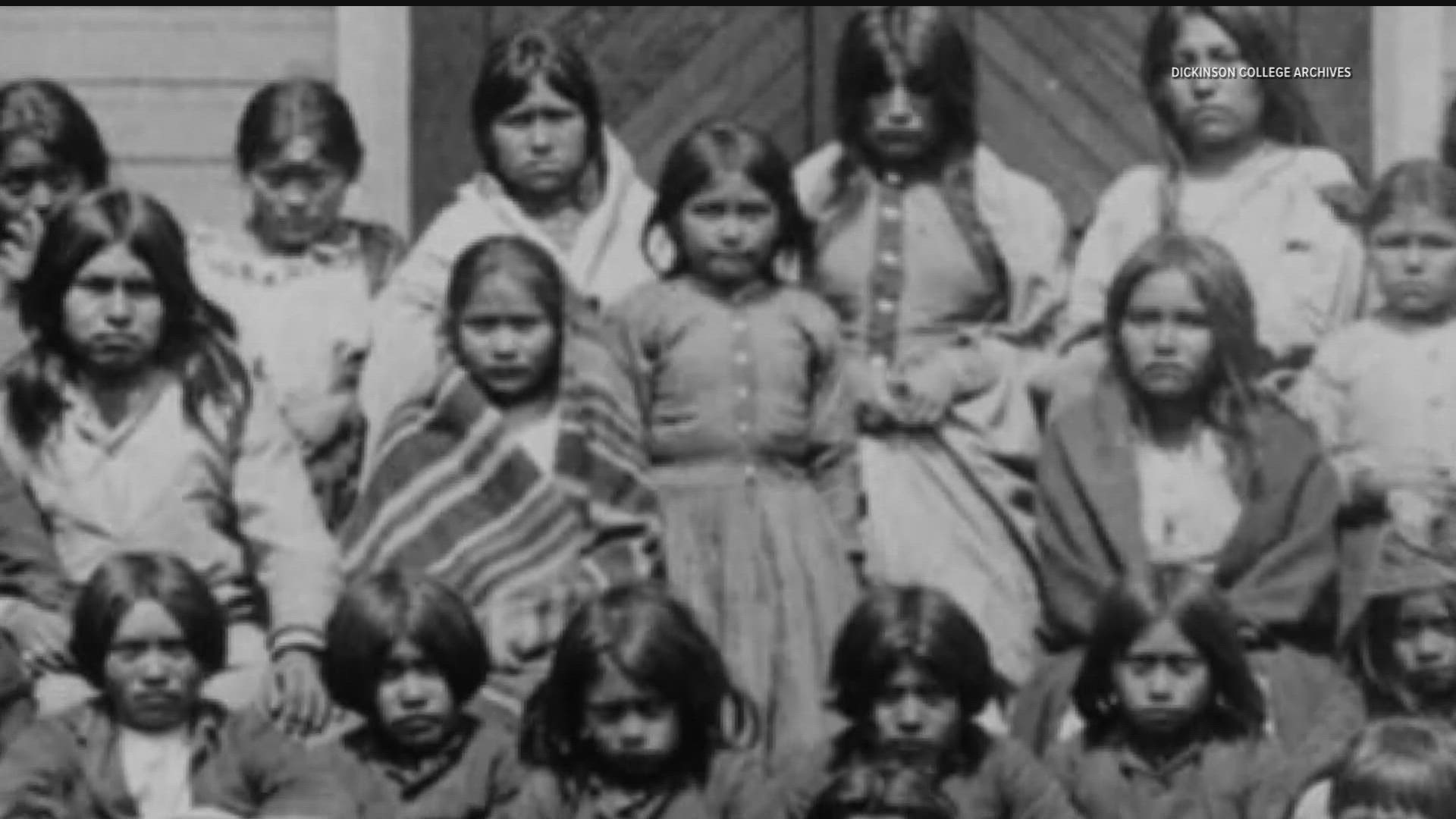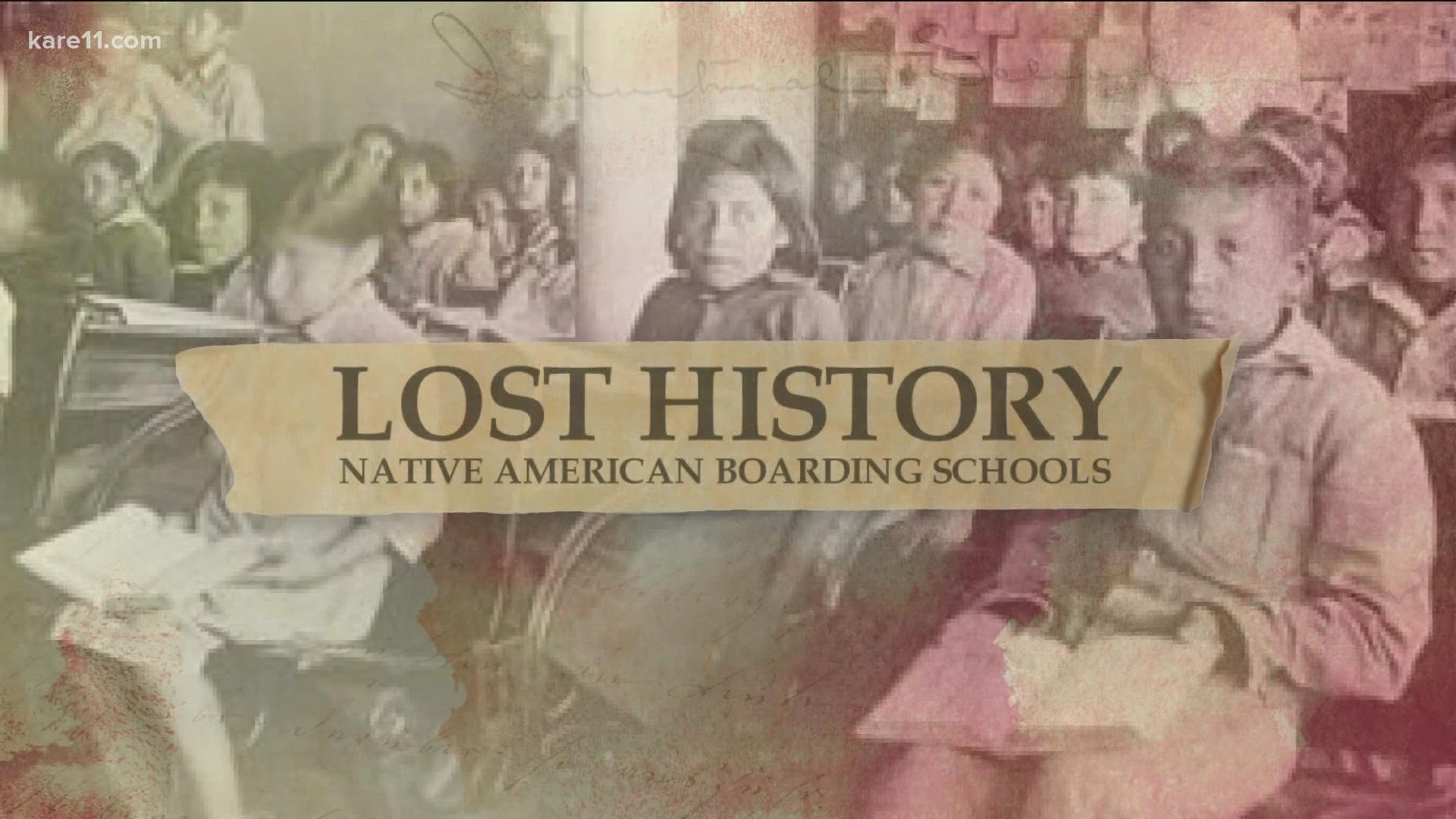ST PAUL, Minn. — "For more than a century, tens of thousands of indigenous children were taken from the community and forced into boarding schools run by the U.S. government," said U.S. Secretary of the Interior Deb Haaland during a press conference Wednesday.
Haaland, and Assistant Secretary for Indian Affairs Bryan Newland, released the first part of the Federal Indian Boarding School Initiative, a comprehensive effort to address the troubled legacy of federal Indian boarding school policies.
"The consequences of the policies, including intergenerational trauma caused by forced family separation, inflicted on generations of children as young as 4 years old," she said.
It's a subject personal to many.
"When my maternal grandparents were only 8 years old, they were stolen from their families, cultures and communities, and forced to live in boarding schools until the age of 14," said Secretary Haaland.
In the early 19th and 20th centuries, the Federal Indian Boarding School system consisted of 408 federal schools across 37 states or then territories. The investigation identified marked or unmarked burial sites at approximately 53 different schools across the school system.
"Each of those children is a missing family member," she said.
BELOW: Lost History: Native American Boarding Schools - Part 1
BELOW: Lost History: Native American Boarding Schools - Part 2
The report also addresses the intergenerational trauma caused by school policies.
"Including cycles of violence and abuse, disappearance of indigenous people, premature deaths, poverty, loss of wealth, mental health and substance abuse," she said. "While generations of Indian, Native Hawaiian children entered these boarding schools, many died," said Newland.
With a $7 million investment from Congress through the fiscal year,
Haaland is hoping to continue digging into the past to identify the long-term and short-term effects on the American Indian, Alaska Native and Native Hawaiian communities.
"And the work we do with the initiative will have a transformational impact on those who follow," said Haaland.
University of Minnesota Morris Acting Chancellor Janet Schrunk Ericksen released the following statement in response to the initiative:
We are glad to see the federal government formally acknowledge the work needed, as Secretary Haaland said, "to strengthen and rebuild the bonds within Native communities that federal Indian boarding school policies set out to break."
The University of Minnesota Morris is committed to creating a campus community in which Native American students can connect with and deepen their knowledge of Indigenous peoples, nations, tribes, and languages; where Native cultures are more present and reflected throughout campus life; and where all members of our community benefit from knowledge and understanding about our shared histories and the people indigenous to this place.
The University of Minnesota Morris’ American Indian Advisory Committee (AIAC) was established in 1988 to advise the chancellor and continues to do so. We greatly value the tremendous insights and guidance provided by our Advisory Committee, by Anishinaabe and Dakota and Lakota elders, Tribal Historic Preservation Officers, Tribal legal counsel and by the Boarding School Healing Coalition leaders who have worked with our campus community to better understand and remember the past on the UMN Morris campus. We have much more work to do, and we are grateful to all who are helping us do better. At every step, we are committed to proceeding in a culturally appropriate way with the wishes of those affected most directly as our guide. UMN Morris would welcome the federal “The Road to Healing" tour to visit the Morris campus and supplement our work.
According to initial analysis from the report, 19 Federal Indian Boarding Schools accounted for more than 500 child deaths.
As the investigation continues, the Department expects the number of recorded deaths to rise.
For a full report on the history of Native American Boarding Schools in Minnesota, visit the link here.


